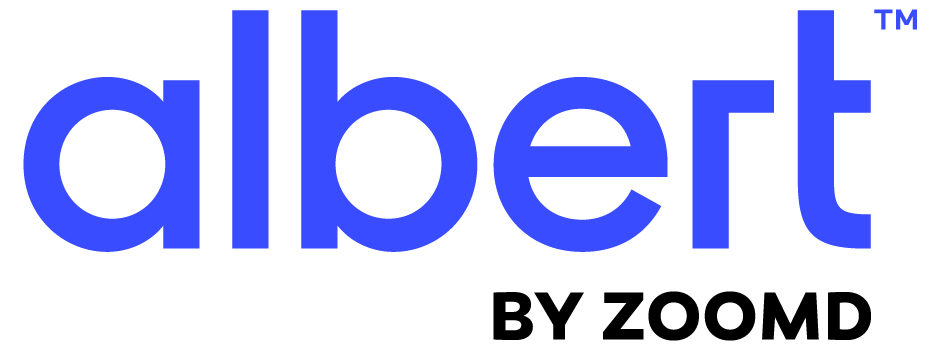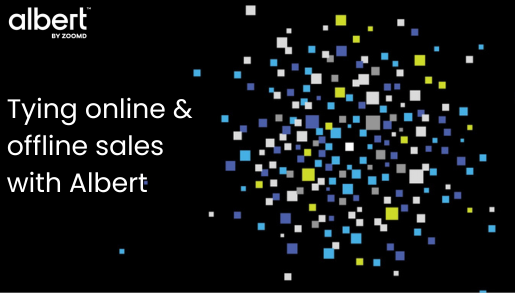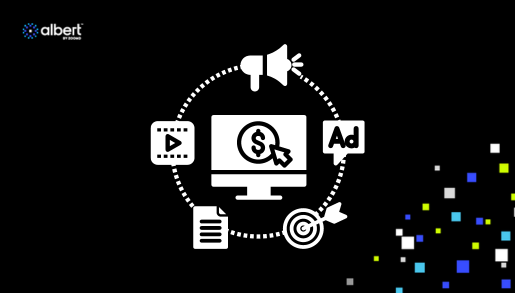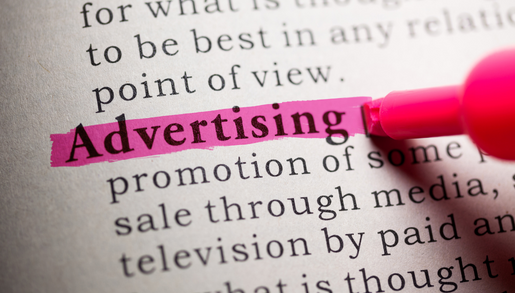By integrating IRI based past sales and marketing performance data as the benchmark, Albert AI enables marketers to identify the increase in sales generated in physical stores by digital marketing
Digital marketing started its tremendous growth in the 1990s on the promise that marketers would finally know which ad to serve which user and when to maximize sales. But due to changes in global privacy legislation like GDPR in Europe and CCPA in California (and state privacy laws in 10 other states), coupled with vendor-driven privacy changes from Apple and soon Google, 25 years later, marketers can no longer receive all the data and marketing signals from a consumer’s digital customer journey.
Despite these privacy-driven changes in digital marketing, using machine learning and artificial intelligence technology, marketers can better understand their campaign performance. Working with Albert AI, marketers are even able to attribute offline sales in physical stores to online campaigns, based on IRI data.
Be disciplined and consistent with your marketing data
Given all of the data marketers now have at their disposal, the first rule of effective data management is to monitor the same streams of data over time across all targeted audience segments. If marketers focus their campaigns on a set and limited number of channels, when supported by detailed and continuous sales data, then they will be able to understand specifically which ads are generating the greatest sales lift and optimize performance by serving the top-performing ads.
In fact, Albert AI is most effective when working with a disciplined marketer that has a treasure trove of data. Whereas humans can get lost when there’s too much data, Albert doesn’t have this problem. On the contrary: Albert’s best results are for Fortune 100 marketers because they’re data-rich and disciplined.
Albert’s AI technology facilitates the optimization of campaign performance by analyzing results from among the creative variables submitted by the marketer including images, text, and videos. For example, Albert’s technology coupled with in-depth SKU IRI data can enable a marketer to understand that the video with the puppy dogs is more effective in Texas whereas the video set on a ski slope performs better in Vermont and Massachusetts. By providing Albert AI with a range of creative variables, the technology is able to assemble ads that generate the most cost-effective performance for selected target audiences and ad channels. And Albert is also able to determine when it’s time to refresh or change ad creative to ensure an optimal Return On Ad Spend (ROAS).
For a leading CPG breakfast marketer, Albert AI was able to tie online advertising on the leading digital platforms with an offline increase in sales at physical supermarkets in specific markets across north America. This knowledge enabled the marketing team to optimize their marketing spend according to ad platforms and specific creative ad units. Albert AI is able to answer John Wanamaker’s famous question about not knowing which half of his advertising spend is wasted.
By enabling marketers to understand which creative impacts sales, Albert AI serves not only marketers but the entire sales and product operations team. Albert AI data enables optimizing factory production schedules according to seasonality and other factors. This level of data is used to facilitate company production schedules that can maximize company sales and profitability.
“Though Albert’s AI technology enables improving ad creative performance which results in a sales lift, our Fortune 100 clients are able to utilize the data to support operations and optimize factory production schedules to maximize sales and profitability,” said Sagi Weinberg, Albert AI’s Sales Director. “Beyond optimizing campaign performance, Albert provides real business accountability.”
Albert’s technology leverages AI to create new ad variations that optimize campaign performance, from keyword, audience, platform, and device selection and bidding to creative optimization across search, social, display, and cross-channel. Albert assists marketers and agencies – from defining campaign strategies and messaging to the creation and optimization of ads across audience segments and platforms. By working 24/7 to continuously optimize campaign performance, Albert AI complements marketer and agency teams, giving them the insights to make them smarter as well as more efficient and effective.
Tag: advertising
Bridging the gap between advertisers and technology with Albert.ai
In today’s world, technology is advancing at an unprecedented rate. From artificial intelligence to virtual reality, we’re seeing an explosion of new technologies that promise to revolutionize the way we live, work, and play. However, with all of this new tech comes a problem: a growing gap between advertisers and technology. As technology becomes more complex and specialized, it can be difficult for advertisers to keep up.
Albert.ai is a platform that was created to help advertisers of all sizes gain a better ability to maximize their performance on both social and search ad platforms. With Albert, marketers can quickly identify customer needs, optimize their campaigns, and measure their success with AI-driven insights.
One of the key features of Albert.ai is its ability to provide real-time data and insights. This allows companies to make more informed decisions about their marketing strategies, and to be more agile and responsive to changing market conditions. By using Albert.ai, companies can gain a better understanding of their audience and their behaviors, allowing them to create more personalized experiences that can drive engagement and increase conversion rates.
How is Albert bridging this gap:
• Efficient and effective: Albert.ai uses artificial intelligence to automate and optimize marketing campaigns, reducing the amount of time and resources required to achieve the desired results. Albert can also integrate with other marketing channels and tools, streamlining your marketing efforts altogether.
• Transparent and informed: Albert.ai provides real-time data and insights, allowing advertisers to make more informed decisions about their marketing strategies. This can help advertisers be more agile and responsive to changing market conditions. Albert’s AI capabilities also enable it to learn from past campaigns and make adjustments in real-time, leading to better results over time.
• Profitable and competitive: By automating and optimizing marketing campaigns, Albert.ai can help advertisers achieve better returns on their marketing investments. This can help companies be more profitable and competitive in their respective markets.
• User-friendly platform: Albert.ai has a super user-friendly interface that is easy to use and understand. Making it easier for marketers to adopt and use the platform, no matter how tech-savvy they are.
• Personalized experience: Albert.ai uses the advertiser’s owned data to create personalized experiences for each user, improving engagement and conversion rates. This can help companies build stronger relationships with their customers and increase revenue.
To bridge the gap between advertisers and technology, Albert.ai’s user experience is designed with simplicity in mind. The platform provides a clear and easy-to-understand interface, minimizing the number of clicks and providing clear feedback to users. Albert.ai also prioritizes accessibility and ensures that its interfaces are accessible to all users, including those with disabilities.
In addition, Albert.ai provides training and support to help advertisers get up to speed. The platform has an extensive knowledge base and support team that is available to assist with any questions or issues. Albert.ai also provides video training and tutorials, making it easy for users to learn how to use the platform at their own pace.
Embrace the culture of innovation
It’s up to people to understand that we are in the middle of a new technological revolution, the AI revolution. While AI tech won’t replace you, humans who adapt\embrace AI will replace you. This means fostering an environment where experimentation and creativity are encouraged. Where employees are given amazing resources and support that they need to explore new technologies and ideas. By testing and embracing innovation, companies and their employees can stay ahead of the curve and continue to develop new technologies that meet the needs of people worldwide.
AI for the masses
Worth noting that Albert.ai is not just a tool for large companies with large budgets. The platform is designed to be accessible to advertisers of all sizes, and to provide a cost-effective solution for those who are looking to improve their marketing efforts. By providing a self-service platform that is easy to use and understand, Albert.ai makes it possible for even small businesses to take advantage of the benefits of AI-powered marketing.
In conclusion, bridging the gap between advertisers and technology is an essential challenge that Albert.ai is tackling head-on. By leveraging the power of AI and machine learning Albert is simplifying the user experience, providing training and support, and fostering a culture of innovation, Albert.ai is helping advertisers overcome their fear of technology and embrace the exciting possibilities of the future.
If you’re looking to improve your marketing efforts and stay ahead of the competition, Albert.ai is definitely worth considering.
Talk to us and schedule your personalized demo, with a real person.
How AI Supercharges Your Paid Media Campaigns
You feel a rush of excitement, don’t you? When they click on your ads, go down the funnel, click the buy button. When you see the metrics add up to something you know will get the entire department gasping. It makes all the hours you’ve poured into your campaign worth it, except…
It’s not easy to replicate this success, especially with a constantly changing technological landscape. For some of us, it’s becoming challenging to target the right people, at the right time, with the right message, the right format, the right platform. Sometimes you wish you could click a button and get some validation that you’re doing things right. That you could have some consistency. That it will become a little easier soon.
In a way, that’s what AI is here for. It specializes in making more data-based decisions (that it analyzes automatically), faster, with a bigger return on investment and surprisingly creative solutions. Today, we’ll explore how AI can help you maximize your paid media campaigns.
Let Go of Fear of Replacement
As AI makes more headlines, the fear-based conversation gets bigger. The rumor that AI will replace advertisers feels like the truth. That’s likely why we see advertisers who “don’t give [Albert] enough creative materials to allow it to efficiently optimize, or give it too many restrictions,” as Nir Huberman, our product solutions manager here at Albert, shared with us in an interview.
But this feeling, like many other fear-based feelings, isn’t likely to represent reality in the foreseeable future. As Sagi Weinberg, Albert’s sales director, clarified in another interview, AI might continue replacing some advertising tasks, but advertising and marketing management will remain human-based, including:
=> Developing business models and goals.
=> Deciding on KPI measurement strategies.
=> Leading the way to the next big steps.
Therefore, the best way to maximize AI tech for your paid media campaigns is to see it as your ally and work with it.
For example, the team at Telenor, one of the largest telecom companies in the world, used Albert’s AI powers to supercharge its own and to amplify its capabilities. As a result, its members can more easily turn their vision into results that impress their CEO. Following is what they did.
Turn Weak Spots into Advantages
Being smart and strategic, Telenor’s B2B marketing team set out to test their ad campaigns. Unfortunately, they quickly discovered that creating enough assets for all the tests they wanted to run would break their budget. Who wants to go to management and ask for an increase?
Go explain the details of every test and why it matters.
So, instead, they tested our platform, Albert.
=> Albert mixed and matched countless creative assets.
=> It ran way more tests than its humans could have beforehand.
=> Within two days, team members knew which combinations drive the best results.
=> The team used this data to continually improve their content, creatives, strategies and offers.
Within a year, the team that almost went to management to ask for a bigger budget is now driving:
=> 30% lower cost.
=> 122% year over year lead increase.
=> 423% return on advertising spend.
Of course, one of the biggest weak spots preventing advertisers from reaching better results is that they don’t know how to link the top and bottom of the funnel to each other. AI tech has solutions for this, too.
Connect the Top & Bottom of Your Funnel
AI can perform multivariate, cross-channel tests, process data, conduct ongoing statistical analysis, and figure out typical behavioral patterns for each part of the funnel… all without coffee.
We especially loved seeing this with a food and beverage client. As we previously shared, they had ambitious goals, just like we like:
=> Determine that their branding translates to dollars across 189 counties, and
=> Grow a new ecommerce site.
To help them out, our platform, Albert, combined performance ads with a branding video. It leveraged its collected data to understand when to send viewers down the funnel based on engagement levels.
The result? Much better return on advertising spend.
Discover Unexpected, Profitable Audiences
The ability to run so many tests simultaneously also means AI can easily test different types of audiences. That’s something many of us human campaign managers find challenging to do properly. After all, we have endless daily tasks, including…
=> Structure campaigns.
=> Test out campaigns.
=> Optimize creative assets.
=> Adjust bids.
You name it, we probably do it.
However, AI finds it pretty easy to achieve relevance at scale. It has mountains of data that, somehow, don’t overwhelm or distract it. It doesn’t lead to procrastination, and doesn’t take ages to complete.
It quickly tries thousands of variations – both text-only and text-image combinations – on a variety of…
=> Segments.
=> Keywords.
=> Placements.
AI tools, like Albert, can work efficiently while still rocking existing activities and budgets. As a result…
=> Existing KPIs get sacrificed very little, if at all.
=> At the same time, AI finds new, profitable audiences.
=> It also discovers the best performing keywords and ad variations to serve each of these new, profitable audiences.
As campaign managers, we’re left redefining our conclusions about our creative and marketing strategies in ways we never would have considered before.
Give AI its Freedom, But Stay in Control
Being an autonomous digital marketing ally, a platform like Albert serves highly personalized creatives and messages to increasingly larger audiences. It can act upon its conclusions, without pausing to ask for permission. This allows us advertisers to maximize performance, scale and budgets with little effort and dedicated time.
However, letting AI run free could lead to disastrous results, of course. Therefore, like we said above, humans are still needed. Importantly, advertisers that successfully maximize their AI tech for paid media success…
=> Define campaign goals.
=> Define a measurement strategy and one source of truth.
=> Set guardrails.
Guardrails can include rules to stop or shift activity if certain things take (or don’t take) place. It could also mean monitoring keeping humans at the forefront of campaigns.
At Albert, for example, we provide two human managers for each client. The intention is to…
=> Support our advertiser clients in leading the direction of their campaigns.
=> Monitor campaign progression and verify campaigns go according to human intentions.
=> Protect brands’ safety and health.
As the AI-based world progresses, get a couple of extra managers and a platform that’s trusted by the world’s leading companies on your side, too. Book your demo to see how you can scale in 90% of the biddable universe.
6 Advertiser Blind Spots To Overcome in 2023
With the excitement of a new year comes an increasing sense of responsibility to deliver meaningful results for our companies. 2023 started with a bang – not only a looming recession but also article after article predicting how machines will replace many of us in the advertising industry.
The best and most optimal results can only be achieved with human-machine collaboration even in these AI-ruled days. We have seen AI helping advertisers overcome significant blind spots time after time, and we know it can help you too, whichever tool you choose to use. Here are 6 major blind spots you must overcome in 2023 to make a real difference in your company’s bottom line.
1) Acquisition or Retention?
Now that we’re in a recession, budgets get limited, and you find yourself wondering where to invest more. Some say retention must come first. They say that, if you invest in the customers you already have, you’ll grow tenfold. Customers that have already had great experiences with your product, will want to buy more. They’ll tell their friends – a recommendation that’s worth way more than anything we can say about our brand ourselves.
Some are pro acquisition – the more customers you have, the better. They know that many customers churn, and you have to keep spreading brand awareness, to keep introducing your products to as many people as possible. This way, they say, you’ll always have a solid, growing customer base.
Usually, they’re both right. We need to take good care of the customers we already have, while constantly introducing our brand to new audiences. But we often don’t have enough data on what drives larger lifetime value in our specific situation, what that lifetime value is worth to us, or what types of campaigns work best for each type of customer. And if we’re looking for new customers… We don’t always know where to find them.
2) We Can’t Find New Audiences
If you set out to find new audiences and keep landing on the same ones you’ve already reached, you’re not alone.
=> Maybe we’ve thought of our product one way, and didn’t know it could have additional usages.
=> Maybe a feature we discounted was gold for someone out there.
=> Maybe new audiences hide in plain sight, like a small market within our segmentation, that with some new messaging, could grow exponentially.
If you’re not reaching new audiences, you’re not leveraging enough – or the right – media sources. You need to find new places to advertise. Albert, for example, uses existing audiences’ interests and lookalikes on Google and Facebook, among others, to find new audiences. It also makes it easier to discover what each of your audience segments wants.
3) What Each of Our Segments Wants
After testing 11,340 variations in audiences, channels and strategies, we managed to discover a global FMCG/CPG company used the wrong messaging. Wanting to connect with their audience, they used messaging that focused on character, when their audience actually wanted to get promotions across a range of options.
But who has the time to run 11,340 tests?
An AI software. In this case, testing was done quickly, way faster than what a human could do.
4) The Right Personalization for Every Situation of Every Segment
The more accurate you are, the more each segment will feel understood and seen, the more likely they are to click and convert. But what happens if you have hundreds, or even thousands, of segments?
You need automation.
Some AI-driven AdTech, like Albert, can take…
=> A wide variety of ad copy options
=> … and visual options
=> … and audience segmentation options
… and create a long list of combinations, which it can then check across audiences and channels. It can do so responsibly, spending most of your budget only on the best-performing options. It can give you insights, or use them itself to plan the next step of the campaign.
5) How Unconnected Campaigns Impact Each Other
If you advertise offline – OOH, TV, CTV – you need a way to connect these ads’ performance with your KPIs, so you can know how effective they are. There’s a variety of ways to do it. Connecting what seems like unconnected campaigns can help. For example, one of our clients only advertised on a specific TV show, then targeted that show’s audience online for better measurement.
But whether you advertise offline or not, what do you do when you reach your audience members? How do you know they’re ready for the next funnel stage?
Data, of course. You want to see enough signals that tell you this lead is “worth” investing in further. But there’s only so much you can discover about a lead from one channel or one point in time. To truly understand a lead, you’ve got to look at…
=> Her behavior and preferences in every separate channel.
=> Consider your ideal customer’s overall experience and behavior across channels. Maybe she searches on Google, but only buys the actual product from TikTok influencers she trusts?
=> Analyze her historical data, including what she’s searched, what she’s put in her cart, the content she’s interacted with, etc.
As human advertisers, we’ve got to prioritize our data analysis and campaign tasks. No matter how big our departments are, we can’t do it all. Therefore, it’s very challenging – especially if you have lots of products and/or large audiences – to do it manually. With AI, you dedicate some time to set it up and monitor it, but it can do a lot more than we can in a lot less time.
6) Where Our Money is Best Spent
Ultimately, overcoming your advertising blind spots means you’ll know how your money is best spent. Among others, you need to know:
=> Which messaging works best for which segment, and in which situations
=> Which visuals work best with which texts
=> Which channels convert best with which audience segment and/or creative asset
=> How different channels impact one another, and how to build an omnichannel campaign that takes historical data into consideration, too.
If you need a tool that can simplify this for you – even automate it for you – check out Albert:
Do Things Differently This Year
Albert is all about saving you time, making your work more efficient, empowering your creativity, simplifying your work and keeping you in control.
Our AI AdTech software can take your KPIs, analytics and creative assets and turn them into a data driven, self-improving omnichannel campaign.
That said, while we trust Albert, we do provide extra human support to monitor campaigns, to verify they’re brand safe and everything is going on track, just as you want.
Ready to give it a try? Schedule your free demo.





